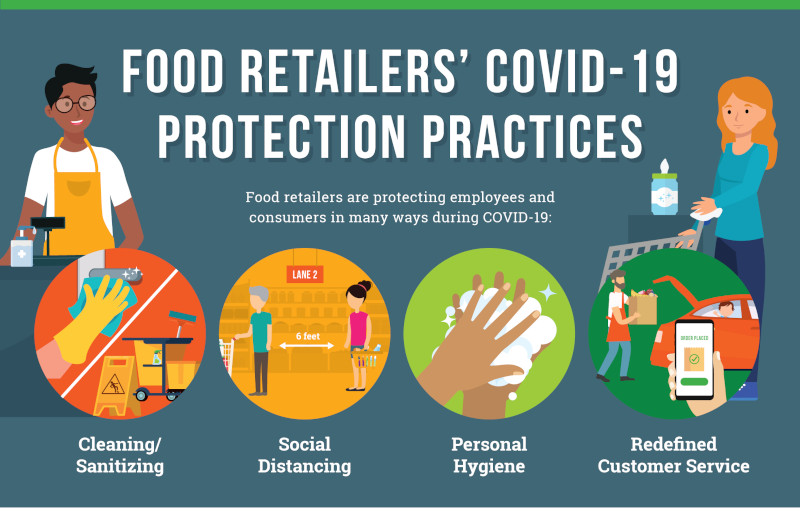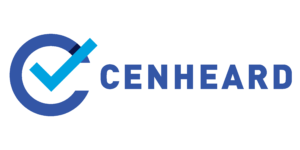Achieve more with a credible health and safety management system…
Introduction
A credible safety management system, being utilised efficiently, can create marketing opportunities for businesses.
The best form of marketing is often ‘word of mouth’. In a customer facing business, being visual in the implementation of your control measures can help assure your customer that they are safe, and even create a local buzz about your business.
Read on the learn…
Increasing credibility
Many accreditations, licences and even grant applications require evidence of a safety management system. The reason for this is that it shows that the business is serious about its legislative obligations.
There are many legal duties place employers under the ‘Health and Safety at Work Act‘. A quality safety management system demonstrates that a business is prepared to take steps to ensure compliance with the law.
For business to business relationships, a credible health and safety management system ensures a level of trust. Implying that certain standards will be met and complied with.
If your business operates face to face with customers, a quality safety management systems can make sure that your customers feel safe. This will increase the likelihood that they will return and become a repeat customer.
Enhancing customer confidence
Actions and procedures built into a management system should be visible. It should be evident to staff, clients and customers that you’re taking their safety seriously.
Since the start of COVID-19, public and employee safety expectations have grown significantly. The public have grown to expect the availability of sanitiser stations, and staff have learnt to work with social distancing.
With this in mind, showing that your procedures are in action can help to build and enhance customer confidence. Taking their concerns seriously can pay off in repat custom and brand loyalty.
Coming out of COVID restrictions, building customer confidence must be part of your business strategy to get back to a new way of operating. Developing customer confidence from the outset will help generate further sales through repeat custom. Helping to protect your bottom line and grow your business.

Protect people
The major benefit from developing a credible health and safety management system is that it focuses on protecting people. The operations of all businesses pose hazards that have risks to both staff and the public. How business move onto protect people after COVID will have more impact than ever on their credibility and viability.

COVID-secure restrictions had a significant impact on business that, up until COVID-19, had to generate very little health and safety documentation.
With the further developed ‘tiering’ system, it is likely that businesses will be obliged to conform to further restrictions. In that case, safety documentation will likely be required in order to stay open and operate.
All of the restrictions are in place to protect people and it’s essential that we all stick to them. But can we do better? There are many examples of businesses going the extra length to protect people and stay open to protect jobs.
With the buzz around business going the extra mile and doing the right thing, it’s worth a thought… What is your business doing to protect your workforce, the public or those affected by your operations? Does you target audience know? Maybe they should!

Credible safety systems at work
A credible safety system will include an number of statements of actions that the company will take in order to protect its workforce. These statements will be backed up by written procedures, risk assessments, adequate training and opportunities to be heard.
In workplaces with a quality safety management system, staff are assured in their work that their daily tasks are considered in detail. They’re are aware of the risks involved in their activities. And each employee can see that when they identify a hazard, they are heard, and timely actions are taken to protect them.
Such workplaces are not fiction but quintessentially British. This is the British health and safety legislation system in action. The workplace is somewhere to work, but also somewhere that you can leave each day, safe to travel home.
Credible health and safety management systems enable business to build trust in their workforce. Helping to improve and maintain productivity, growth and ultimately; profitability.

Costs of a credible safety system
Time.
Regulation 7 of the ‘Management of Health and Safety at Work Regulation 1999’ states that as an employer you must appoint a competent person to meet your health and safety duties.
In fact, on the HSE website, you can find that, as a business owner, you can appoint yourself as the competent person for your business.
Whilst many business choose the option, many later find that they do not have the time, will or patience fully work with their staff to develop a credible and useful safety management system.
To prevent health and safety descending into a rapid fire tick box exercise – get outside help. Here at Cenheard we are specialists in Health and Safety, supporting organisations throughout a variety of diverse environments.
In brief, our passion is to simplify relevant legislation and guide compliance with efficient action based management system that enable growth. Get in touch, Cenheard might just be the help that your business needs to back on its feet.

What a good health and safety management system looks like...
A good health and safety management system has five key components:
- Policy / Policies
- Procedures
- Risk assessments
- Training
- Employee consultation / engagement
Each component is crucial to ensure the long term credibility of a safety management system. Visible action needs to be stay visible, we need to continue to show that we care for the safety of others.
Let’s start at the top, with policies…
Safety system policies
Policies are crucial to gain staff buy in and their long term compliance. Policy statements are made by those who have power within the business and declare actions to protect people. A powerful position declaring that they will take action to protect you is comforting for staff to say the least.
It is from these statements that everything else will build upon. For if it comes with promise from those within power, forthcoming requirements and actions will have the backing of someone with the authority to guarantee implementation.
A health and safety policy will identify the legislation that’s relevant to your business. And for each, a statement of the actions that intend to be taken in order to make sure your business stays compliant.
Safe procedures
Written procedures ensure that work is carried out in the safest known manner. They are tool for training and assessing safe working practices.
Taking the time to assess work tasks by the level of risk they pose, helps to identify opportunities for improvement. Along with any training requirements and potentially any previously un-identified hazards.

Safe procedure form the backbone of how your business operates day to day. Without them, business owners often find themselves working more in the business rather than on it.
A quality procedure will help you delegate more. Furthermore, they will help you specify a level of standard and then train against that standard. In time you’ll finally have that clone of yourself – written in ways of working.
Risk assessments
In order to properly highlight risks and implement corrective control measures, we first need to understand the risks. A risk assessment is the ideal was to assess associated hazards and conclude risks that are present.
Only by conducting a thorough analysis of the problem can we develop proper control measures that aid and drive action to reduce risks.
There are many risk assessment templates out there. Watch this space as Cenheard is expanding it’s online library of eLearning material to include task appropriate risk assessments for you to download and use at work.
Training
At this stage we have a policy, the procedures that it requires and we’ve assessed the risks. Above all, we need determine what is relevant to each staff member and/or members public.

Only after we’ve identified what is relevant can we commence with training. It is vital to keep a training record. A training matrix can be a very useful way of managing training. As a very visual training record, a training matrix can help you quickly identify gaps. Look up refresher training and even identify opportunities for improvement or consolidation.
Employee consultation / engagement
Consulting with employees during the cycle is vital to ensure that the actions and outcomes are not only relevant but effective and practical in reducing the risk(s).
Employees that have been involved in the process, are far more likely to abide by the requirements. At the same time, staff are also much more likely to offer up suggestions for improvement or additional control measures that could further reduce risks.
By engaging and collaborating with employees, risks can be identified quicker and actions can be far more effective at stopping accidents before they happen.
Larger corporations use staff safety committees to represent the workforce and ensure individuals concerns are heard up the hierarchy.
A continual flow of improvement
The infographic below shows the ‘PDCA’ approach to continual improvement.

Many standards have adopted the PDCA ‘Plan, Do, Check, Act’ approach. And modern health and safety legislation is no different. The ‘PDCA’ approach has a proven track records in improve health and safety within the workplace, due to its effectiveness in driving continual action.

Additional benefits of credible safety systems
As is with most business opportunities, getting the basics right can open up new doors.
Voluntary accreditations
Once your business has a credible health and safety management system in place, it can go on to seek industry specific accreditations. Accreditations can go a long way to illustrate why prospective customers should choose you over the competition.
In reality, many accreditations require you to have a basic health and safety management system. These includes:
- For the construction industry:
- For the manufacturing sector:
- For retail:
Grants and funding
As well your business being able to obtain accreditations, using a credible safety management system can also help with grants and funding.
Many applications will want to know that you are serious about your business. A working health and safety management system goes a long to showing how serious you really are.
Consequently, a number of grant and funding applications now request a copy of your health and safety policy to help with the approval process.
A successful grant application could pave the way for business success. Having a credible safety system keeps your business on top of where it wants to go.

Summary
We’ve covered a lot here. Hopefully you’ve gained some clarity on how a credible safety management system can help to market your business.
Since COVID, health and safety has grown in popularity. If we act fast, it’s possible to pave the way forward and be a driver of customer expectations. Becoming leaders in our fields once again.
